The
New Library
By the early 1900s the facilities
at Wednesbury’s public library, the Free Library, were
becoming inadequate. The library had been in existence
for nearly thirty years, during which time the
population had increased, and the demand for library
services was greater than ever. One serious problem, the
lack of space, could not be overcome because there was
no room on the site for the building to be extended. The
rooms were poorly lit, and poorly ventilated, and lacked
modern equipment.
|
|
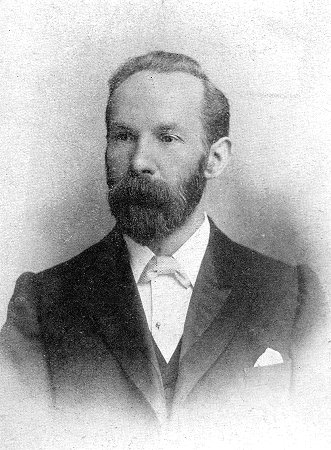
Mr. Thomas Stanley. |
The librarian, Mr. Thomas Stanley,
could see only one solution to the problem, a new and
larger site containing a larger building with up-to-date
facilities. The problem as ever, was funding such a
project.
In 1902 he approached the Scottish-American
industrialist, multi-millionaire and philanthropist Mr.
Andrew Carnegie in the hope of obtaining a grant.
Initially Mr. Carnegie refused, but Thomas Stanley
persevered, and continued to write to him, explaining
the library’s difficult predicament.
In December 1904, Mr. Carnegie
changed his mind and wrote to the Town Clerk, Mr. Thomas
Jones, informing
him that he would provide £5,000 for the erection of a
new free public library, as he owed much to Wednesbury
because it was here that his firm first saw the
experiment in the basic open hearth process of making
steel.
The Town Council unanimously accepted Mr.
Carnegie’s offer. All that was needed for the project
to begin, was a new site.
|
| Finding a new site proved more
difficult than expected. By the autumn of 1906 a site
had still not been found, and so in December of that
year, the Mayor and Mayoress, Mr. and Mrs. Handley,
generously gave a suitable piece of land on the corner
of Walsall Street, and Hollies Drive to the town. The
project could at last begin. |
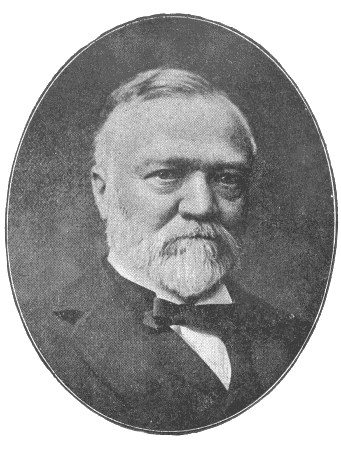 |
|
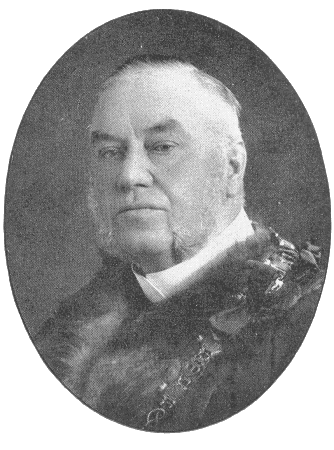 |
|
Mr.
Andrew Carnegie. |
|
Alderman
John Handley, J.P. |
|
|
Several sets of plans were
submitted by various architects, which were assessed by
Mr. Guy Dawber, President of the Royal Institute of
British Architects. The chosen design had been submitted
by Crouch, Butler, & Savage of Birmingham, who became
the architects for the new building. The contract for
building the new library was given to Mr. T. Elvins of
Hockley, Birmingham.
|
|
On 22nd October, 1907 the Mayor,
Alderman John Handley, laid the foundation stone, and
building work quickly got underway. On almost a year to
the day (28th October, 1908), Alderman Handley returned
to officially open the new library, which at the time
was one of the best in the country.
The lovely building in free
Renaissance style is a tribute to the work of the
architects. It is faced with red Ruabon bricks, and
Monks Park stone, and has a domed cupola.
The main
entrance in Hollies Drive is richly carved, and was
originally filled with a patent revolving door to
provide freedom from loss of heat, and draughts.
It is a
delight to enter the wonderful entrance hall with its
ornate white columns, and beautifully decorated plaster
ceiling. The upper floor is reached by a fine stone
staircase with an attractive balustrade, and an elegant
wooden handrail.
The first floor rooms, like the
entrance hall, are beautifully decorated with fine
ceilings, and plenty of light from the well-placed
windows.
|
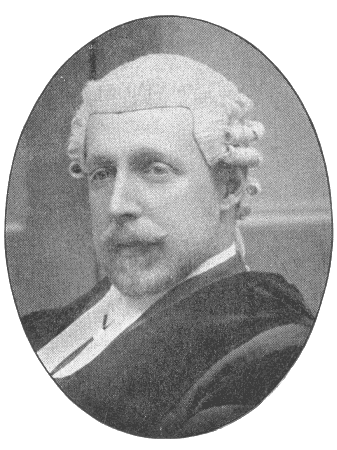
Mr. Thomas Jones, Town Clerk and
Hon. Secretary of the Library Committee. |
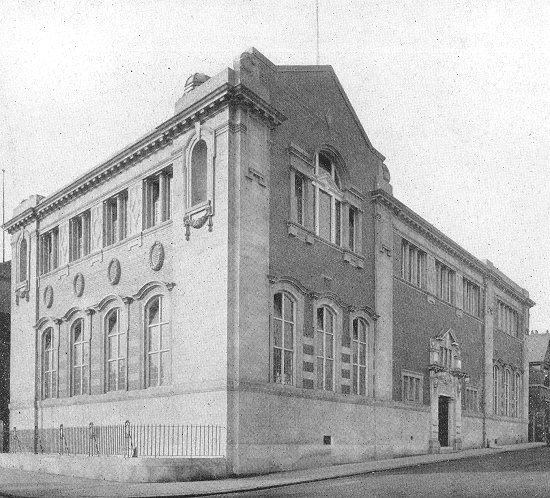 The new Free Library.
The new Free Library.
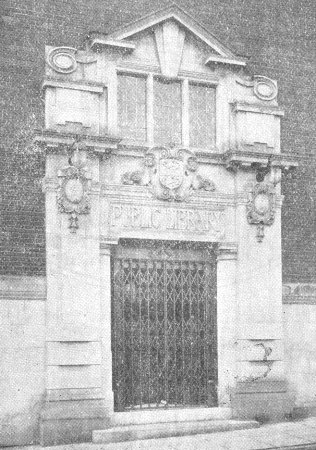
The elegant entrance in Hollies Drive. |
|
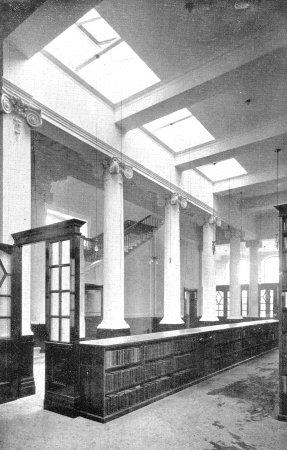
The lending department. |
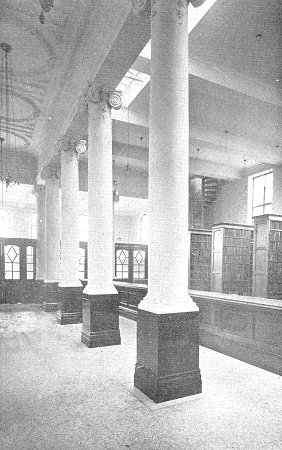
The entrance hall. |
|

The staircase and corridor. |
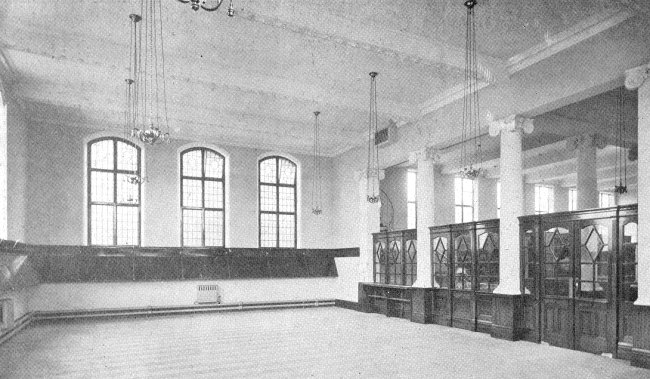 The news room.
The news room.
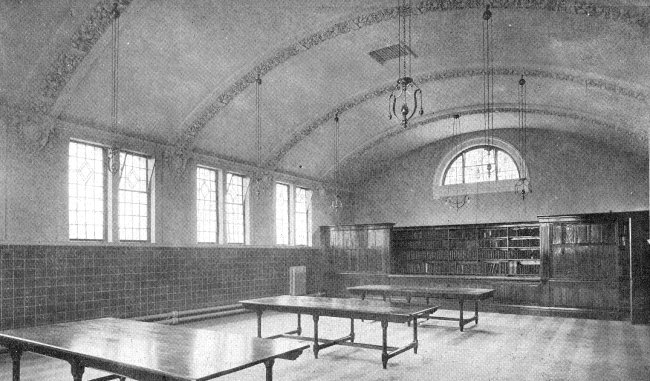 The reference room.
The reference room.
|
Right from the start the library
fully catered for the needs of the local population. By
the 1930s around 160,000 books were issued each year.
The library is one of the most beautiful buildings in
the town, it is still a great joy to enter, just as it
must have been when new. It now has the latest
technology, and has retained all of its magnificent
architectural features. It is a credit to the local
authority.
|
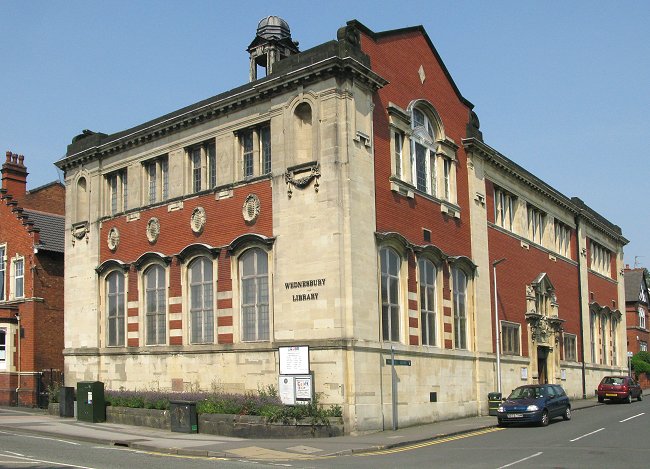
The library in 2013.
 |
Return to
the
previous page |
|





